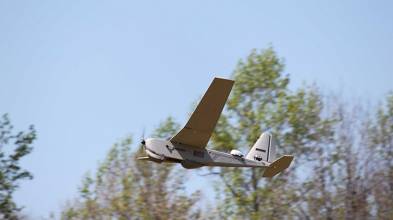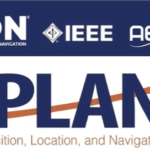 Professor David Last
Professor David LastThe noise floor seems to be rising on the subject of GNSS vulnerability to such things as jamming and interference.
Recently, the United Kingdom provided the locus for a trio of initiatives that reflect growing anxieties about the widespread global dependence of critical position, navigation, and timing (PNT) applications and infrastructures on the low-power signals from space.
The noise floor seems to be rising on the subject of GNSS vulnerability to such things as jamming and interference.
Recently, the United Kingdom provided the locus for a trio of initiatives that reflect growing anxieties about the widespread global dependence of critical position, navigation, and timing (PNT) applications and infrastructures on the low-power signals from space.
The Royal Institute of Navigation and the Institute of Engineering Surveying and Space Geodesy at the University of Nottingham have just announced the third iteration of the “GNSS Vulnerabilities and Solutions Conference,” to be held on 5 – September 5–8, 2010 in Baska, Krk Island, Croatia. (Details on website
The Royal Academy of Engineering has launched a study into “GNSS Reliance and Vulnerabilities, and last week the Digital Systems Knowledge Transfer Network (DSKTN) in partnership with the Royal Institute of Navigation organized a symposium on the subject, “GPS Jamming & Interference — A Clear and Present Danger.”
The Imperfect Present
At the February 23 DSKTN symposium, Professor David Last, well-known PNT consulting engineer and former head of the Radio-Navigation Group at the University of Wales, set the tone with his opening presentation, “GNSS – The Present Imperfect.”
Using the foil of his speech title’s double meaning, Last recited a litany of incidents that have afflicted GNSS in recent years, both unintended — solar flares and unlicensed high-powered TV stations in northern Italy — and intentional: hijackers using GPS jammers to prevent a stolen vehicle from being tracked.
He showed the results of a Google search using the terms “GPS” plus “jammer.” Formerly, an exercise that would have produced only a few hits, now returns about 185,000 Internet URL citations — including the offer of units capable of jamming both GNSS and mobile phones.
“Our navigation community has long talked about the possibility of GPS jamming, intentional interference,” Last said. “We watched strange devices appear on websites for hackers. We learned of terrorists arrested in the U.S. with jamming equipment. We monitored the development of military jamming, saw it deployed in Iraq, watched the appearance of countermeasures.
“But for a long time, almost the only intentional jamming to affect civil GPS was deployed by governments in tests to assess the threat and develop defenses,” he concluded. “Now all that’s changed.”
Help Is on the Way
Once Last had sounded the alarm, a series of speakers followed him to the podium to describe efforts under way to deal with the problem.
Alan Grant, with the General Lighthouse Authorities (GLA), described two trials conducted by his agency to assess the effects of GPS jamming along the English seacoast — the first, off Flamborough Head in April 2008, and the second off Newcastle Upon Tyne in December 2009. The latter trial also included transmission of enhanced Loran (eLoran) signals to test its viability as a GPS backup under jamming conditions.
For both trials jamming units were provided and operated by the UK Ministry of Defense personnel from the agency’s Defense Science and Technology Laboratories (DSTL).
The jammers worked well, producing numerous alarms on the bridge, erroneous GPS positions, failure of GPS-fed equipment, erroneous information presented on the vessels’ electronic chart display and information system (ECDIS), misleading information presented by the vessels’ automatic identification system (AIS), and reduced situational awareness.
During the Newcastle trials, observers with their own handheld GPS receivers experienced wildly erroneous positions, with Ireland and eastern Europe being the “favorite destinations,” according to Grant.
At the same time, the eLoran system demonstrated as a navigation service position with real-time position accuracy of less than nine meters (at least 95 percent availability).
Sizing the Shape of the Problem
Robert Watson, a professor at the University of Bath’s Department of Electronic & Electrical Engineering, presented an extensive analysis of GNSS signals, link budgets, receiver performance, and types and capabilities of jammers.
He followed this with a presentation of parabolic equation modeling, essentially a path-loss model for radio propagation through the atmosphere. The model takes account of diffraction and scattering effects caused by terrain, water surfaces, and so forth to model the effects of atmospheric refraction of GNSS signals. This tomographic approach can also be applied to reflected signal “scatter” from buildings and large objects.
Combined with terrain data from satellite imagery and knowledge of the location and strength of a jammer, the model can calculate the coverage area and varying effects of jamming on GNSS receivers.
Charles Curry, managing director of Chronos Technology Ltd., described an R&D project overseen by his company — GAARDIAN, which stands for “GNSS Availability, Accuracy, Reliability anD Integrity Assessment for timing and Navigation.
Funded at more than £2 million ($3.1 million) by the UK government through Technology Strategy Board, GAARDIAN is investigating the data collection needed to create a GPS Interference Detection & Mitigation (IDM) network for mission & safety critical applications.
The project seeks to develop the technical requirements for user equipment and infrastructure with which to implement an easily deployable network of IDM sensors near sites, such as airports, road systems, docks, and anywhere else that GPS is leveraged into critical infrastructure.
IDM sensors will filter data and report anomalies to a central server, which would alert users in real-time via the Internet when a GPS anomaly occurs.
Curry said that proof-of-concept systems are emerging and by the end of the March will have deployed a number of probes for wider area data gathering over the next two years.
Industrial Perspectives
Alison Brown, president of NAVSYS Corporation (Colorado Springs, Colorado, USA), outlined the potential use of a GPS Jamming Detection and Location (JLOC) system developed by her company and now
The system uses networked GPS receivers and other sensors (providing angle-of-arrival and time-difference-of-arrival data) as JLOC sensor inputs to monitor for GPS threats and locate their source. A JLOC master station maintains threat database and provides automated alerts to users when a GPS threat is detected in a defined area of interest.
The National Geospatial-Intelligence Agency (NGA) implemented a JLOC for U.S. military users in 2007, with the master station located at NGA’s Monitor Station Network Control Center in St. Louis, Missouri.
Brown suggested that civil sources of GPS real-time GPS data could provide a similar interference detection capability.
In the United States, these networked resources could include the National Geodetic Survey’s Continuously Operating Reference Stations, the Nationwide Differential GPS network, the Federal Aviation Administration’s wide- and local-area augmentation systems (WAAS/LAAS), and the Coast Guard’s Automatic Identification System.
International sources could include the International GNSS Service, GAARDIAN, the Ground-based Regional Augmentation System (GRAS) in Australia, and reference stations in Japan’s Quasi-Zenith Satellite System (QZSS).
Tom Willems, an engineer from GNSS manufacturer Septentrio Satellite Navigation described interference-mitigation technnology being developed by the Leuven, Belgium–based company. Septentrio is designing pulse-blanking and adaptive notch filtering capabilities for its AsteRx receivers, which would enable the equipment to mitigate the effects of continuous wave and pulsed interference at a number of GNSS frequencies.
Royal Academy Study
Martyn Thomas, a consultant systems engineer and visiting professor in software engineering at the University of Oxford, outlined the Royal Academy of Engineering (RAE) effort to leverage the GNSS community’s collective expertise to catalog the current and foreseeable applications that use GNSS for PNT and the consequences if the GNSS service were degraded.
Thomas invited the symposium audience and GNSS users in general to send an outline of applications, the consequences if the service fails, the nature of the service failure (degraded, absent, spoofed/jammed), the timeframe of those effects (immediate, within minutes, hours, and so on), the availability of backup technology, and the existences of standards for GNSS receivers or the backup.
The academy intends to present the study results to staff responsible for technical policy to help them to decide what PNT technology to use, industry regulators to help determine whether to introduce standards for PNT architectures in regulated applications, and the UK Center for the Protection of National Infrastructure to help assess the PNT-related vulnerabilities.
Thomas hopes to have a first draft report by the end of March, a final report by the end of April, and publication by early June. Individuals and organizations interested in contributing information and comments to the study, should send descriptions of as many applications as possible and suggestions of other issues that should be covered to Thomas by email: <ma****@******************co.uk>.
Slides of the KTN symposium presentations can be downloaded in PDF format here.
DSKTN is a public-funded initiative to bring together expertise in scalable computing, location and timing, and cyber security in order to stimulate the development of corresponding technical capabilities in the United Kingdom.
DSKTN is a program of the Technology Strategy Board, a group established by the UK government that operates at arm’s length as a business-led executive non-departmental public body. It is sponsored and funded by the Department for Business, Innovation and Skills (DIUS).




